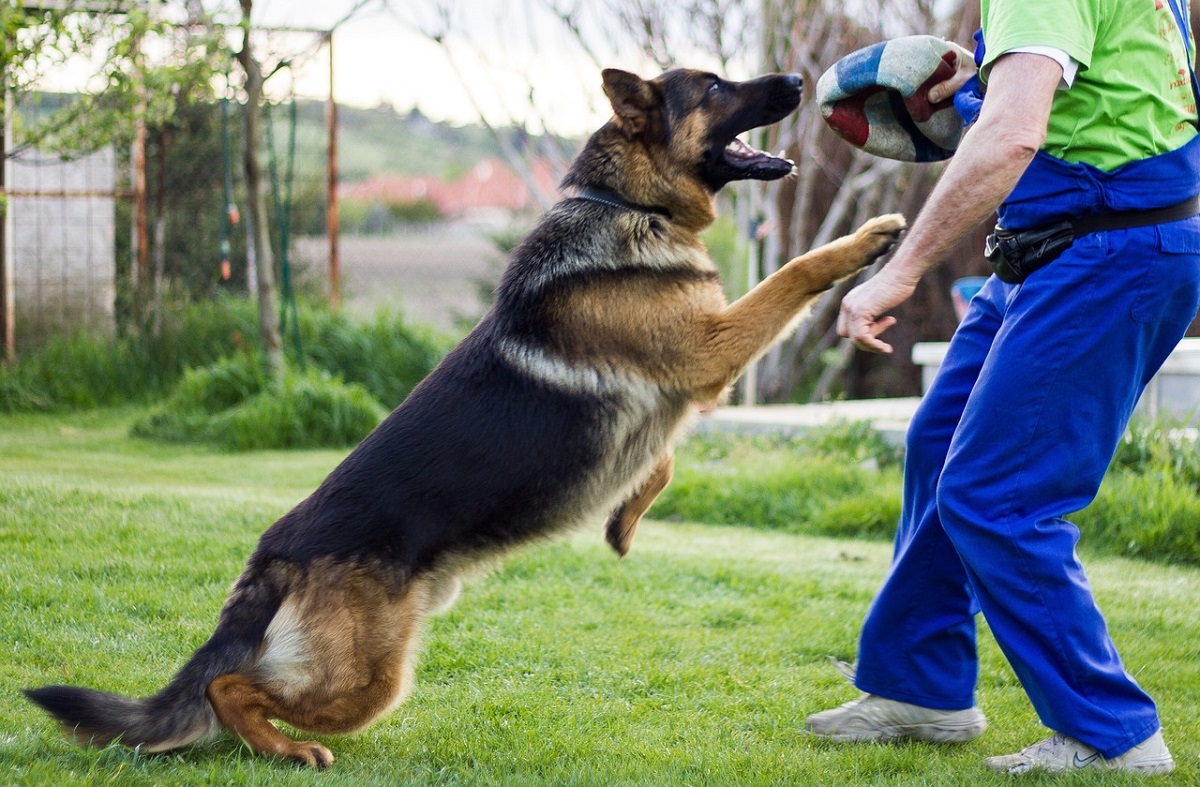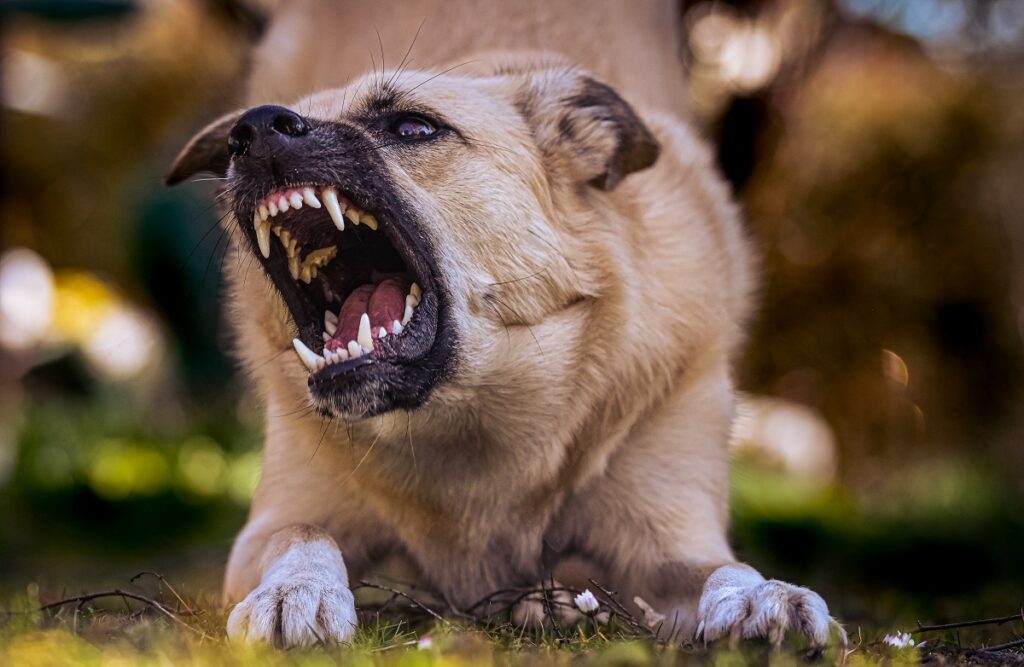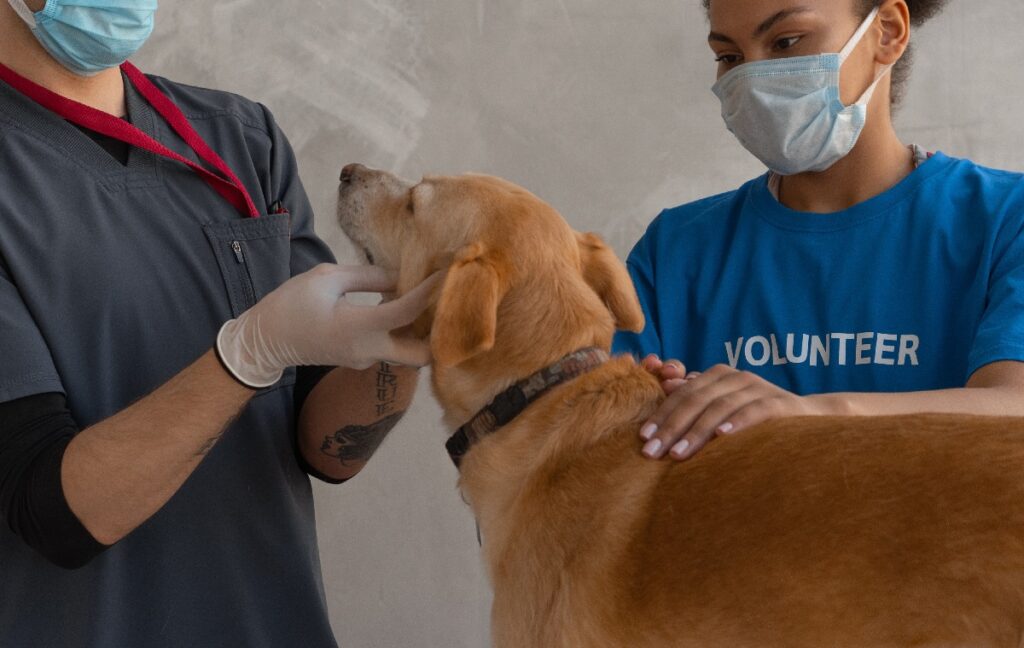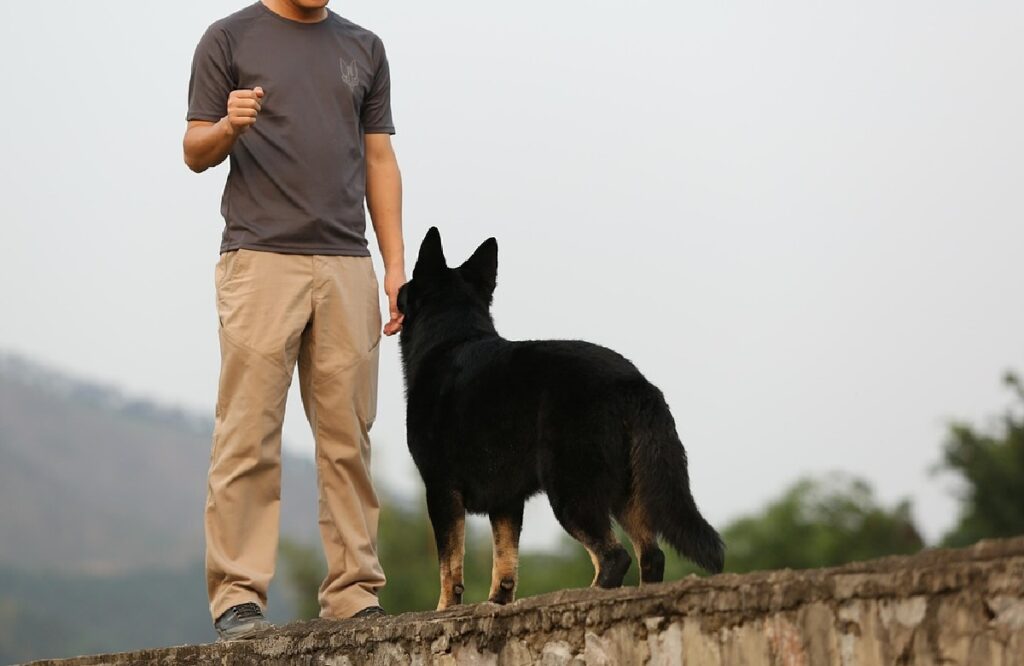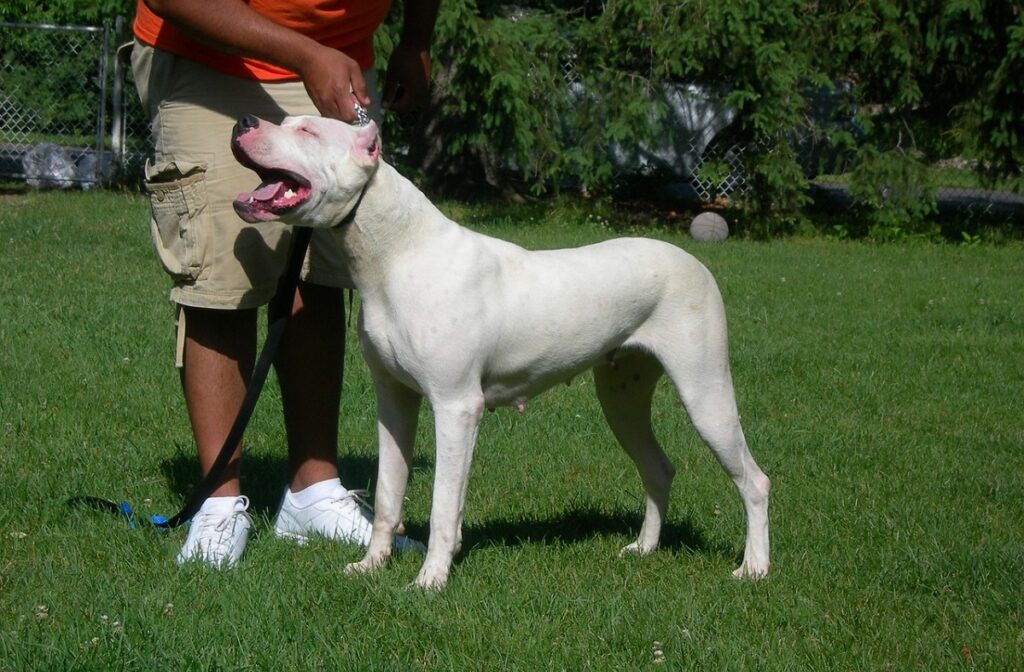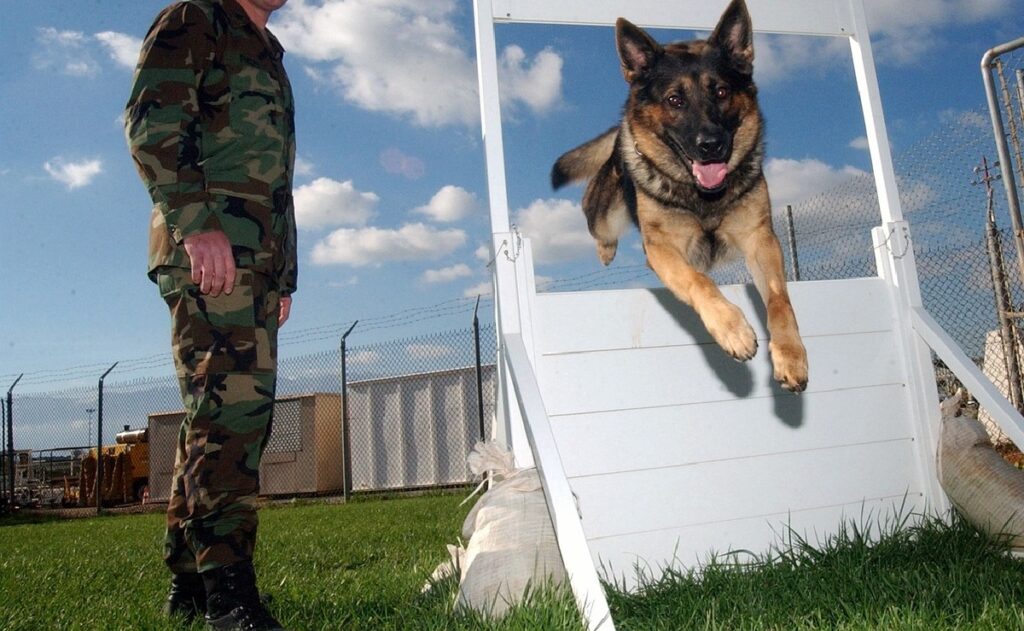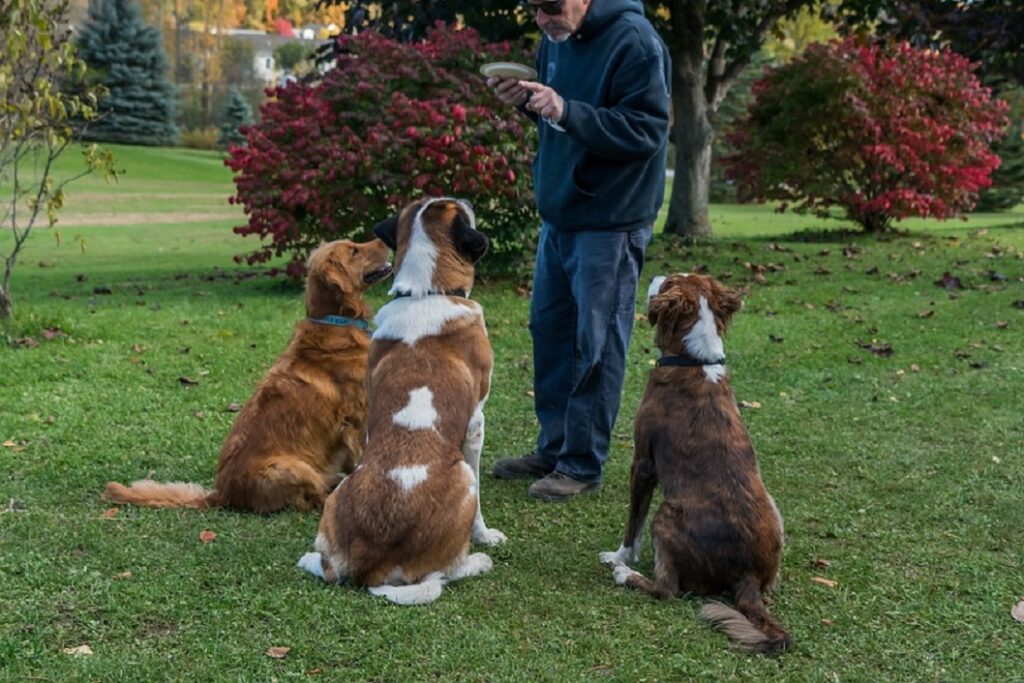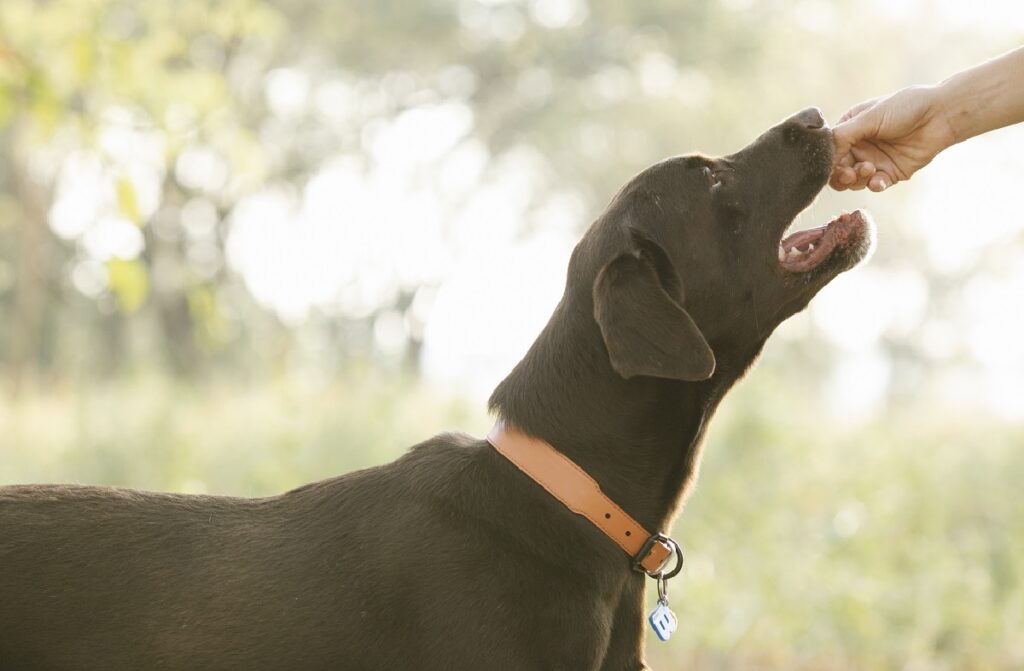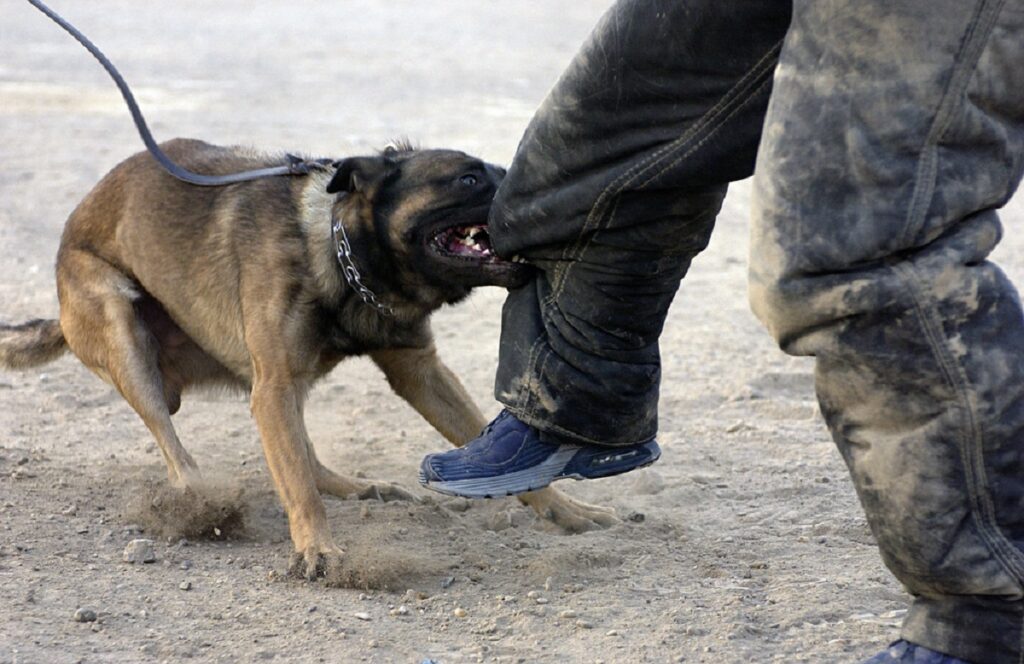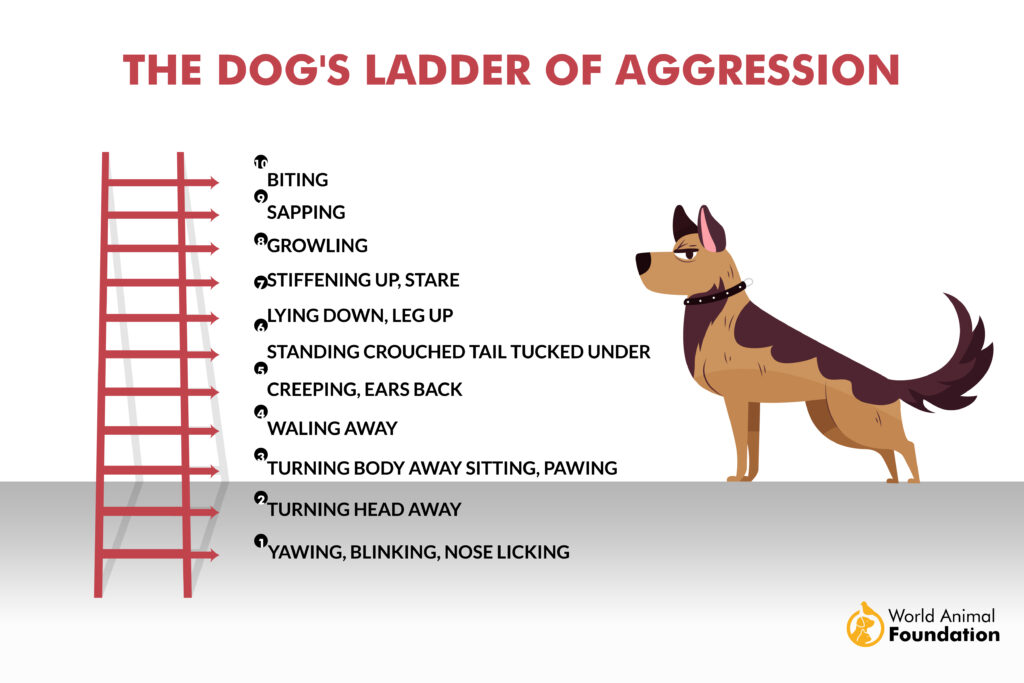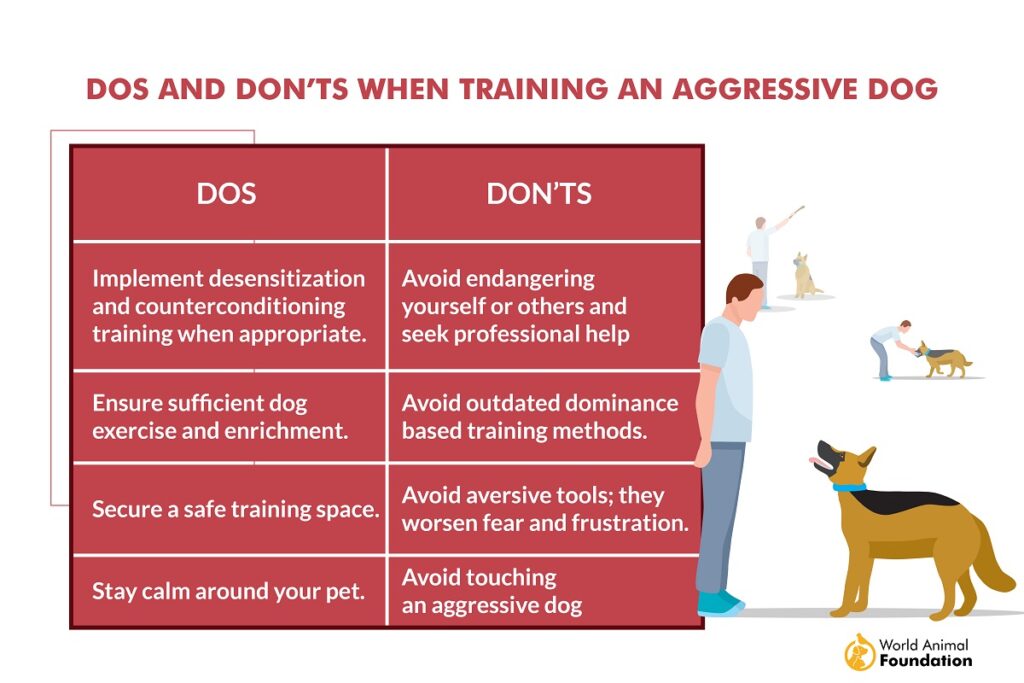Living with an aggressive dog can be terrifying and isolating. Don’t despair, and definitely don’t give up on your furry friend. Aggression isn’t a life sentence; it’s a behavior, and behaviors can be modified. This guide provides proven strategies, from understanding the root causes of aggression to implementing effective training techniques. Before surrendering your dog or resorting to drastic measures, read this. It might be the key to unlocking a harmonious relationship with your canine companion and ensuring everyone’s safety and well-being.
Not only is dog aggression scary at times, but it’s also dangerous for you, your family, and anyone your dog comes in contact with. That said, it’s important to understand that your dog’s aggressive behavior is coming from somewhere, and you need to learn what’s causing it.
Dogs that exhibit aggressive behavior have either been taught to behave that way, or they’re reacting to something. Resource guarding is a common cause of aggressive behavior.
In this guide, I want to use my experience in dog training to help you address your dog’s aggressive behaviors, so they don’t hurt you or anyone around you.
How to Train an Aggressive Dog
Here are some actionable steps you can take to help a dog with aggressive behavior. You should start to seriously think about some of these if your dog exhibits warning signs of aggression with other dogs, dog owners, or other animals.
Schedule a Vet Visit
Before you start thinking about behavior modification, you want to rule out any potential medical issues, pain, or discomfort. Sometimes, dogs exhibit aggressive behavior because they’re dealing with an underlying condition that makes them irritable and ornery.
During the visit, be sure to discuss your dog’s threatening behavior and explain their body language.
In addition to medical issues, there could be some type of psychological concern that will require further testing and attention. Remember that a lot of aggression can stem from fear, anxiety, and lack of mental stimulation. It’s important that you rule out all medical concerns before assuming that their signs of aggression stem from unwanted behaviors.
Contact a Certified Dog Behavior Consultant
If you’ve ruled out health concerns as the cause of their aggressive behavior, you’ll want to start looking into behavioral therapy. By seeking the expertise of a certified consultant, you get someone who can handle your aggressive dog and understands that canine aggression often stems from a place of trauma.
The consultant will conduct an evaluation, which will include their triggers and causes of aggression. This will help provide a better explanation for the causes of the aggressive behavior.
Getting professional assistance is also the best way to come up with a long-term solution. They’ll help you develop a training plan that addresses your dog’s unique idiopathic aggression so you can achieve the best long-lasting results.
Above all else, remember that possessive aggression towards other animals or other dogs is typically due to a lack of boundaries, which can be easy to establish with crate training and other territory control-based methods.
Emphasize Positive Behavior Correction
When dealing with aggressive dogs, it’s critical to focus on positive reinforcement at all times. Make sure you’re rewarding good behavior rather than constantly punishing aggressive behaviors.
You should definitely correct a dog that’s acting aggressively, but you want to reward them equally as much.
This helps build trust and a bond between you and your dog. When they know they’re doing something good, they’ll begin to expect rewards and praise. This is especially useful for aggressive dogs that have dealt with trauma and abuse.
Dogs are more motivated to learn when they anticipate rewards. By offering treats, toys, or affection for desired actions, you make the learning process enjoyable and engaging for your dog.
Implement Behavior Management Techniques
If you hire a professional dog trainer, the first thing they will focus on is behavior management. This involves reducing the likelihood of your dog exhibiting unwanted behavior. This is helpful for a reactive dog or one that refuses to stay in your yard because they like to chase.
The first step is to avoid triggers. Identify situations that set off your dogs aggressive behavior and remove them. Prevention is sometimes the key to behavior management.
While it may be frowned upon, sometimes your dog’s muzzle is the only thing that will teach them that it’s not okay to bite. Using a muzzle or a prong collar is a last resort option for managing your dog’s behavior.
Lastly, consistency is the name of the game. While avoiding triggers is important for reactive dogs, you can’t find them from their issues forever. By consistently exposing your dog to its triggers, you’ll desensitize them, and eventually, they won’t be worried about it anymore.
Utilize Tools to Address Your Dog Aggression
Sometimes, your aggressive dog just needs to know who’s boss. It might seem like a joke, but I’m actually serious. Dogs respond to the way their owners behave in certain situations. Most dog owners don’t behave like the leader, so their dog thinks it has to take the lead. This leads to territorial aggression and stubbornness.
A training harness and clicker are a great way to take back control. My mom was a professional dog trainer for over 20 years, and she said one of the biggest warning signs of aggressive dogs is an unwillingness to return when you call them.
Recall training is so important in managing your dog’s aggression, whether they’re barking through a fence or trying to chase prey down the street. Utilize a tight leash, muzzle, and clicker if needed.
Maintain a Behavior Journal
One of the most unique aggressive dog training tips my mother ever taught me was to keep a journal that explains patterns and behaviors over time. You’ll find that your dog’s aggression follows trends, and you’re likely to forget what happens in the moment.
Some dogs don’t like male dogs, while others don’t like female dogs. As pet parents, it’s our job to note techniques that work and any setbacks that occur during walks, playtime, or training.
Provide Plenty of Treats and Patience
Patience is so important when dealing with an aggressive dog. The last thing you want to do is show your already ornery dog more bad behavior. It’s difficult at times to deal with these signs of aggression, and you’re sure to lose your cool from time to time, but do your best.
Remember to reinforce good behavior with treats and rewards so your pup feels loved and cared about. Over time, they’ll remember that certain good behavior brings rewards while territorial aggression and barking bring nothing.
Main Signs of Aggressive Behavior
Learn to recognize the red flags and subtle signals that your dog may display when their aggression surfaces.
Biting
If your dog bites, it can be frustrating, but it’s so important that you don’t let it go. Starting with a puppy that bites, you want to address this behavior right away so they don’t hurt other dogs, dog trainers, or even small children.
The main causes of biting are territorial issues, fear, resource guarding, and redirected aggression. All of these issues stem from a dog that perceives something as a threat to his or her territory or you.
You need to use a calming voice and redirect their attention by ensuring that everything is okay and using proper measures to prevent the dog from hurting anyone.
Snapping
Snapping occurs before biting, and it’s a quick, aggressive movement of the jaw without making direct contact with the target. Dogs may snap when they want to communicate discomfort, establish boundaries, or express their unease.
Snapping doesn’t always mean someone gets hurt, but it is a sign of aggression in dogs. Understand what their triggers are and pay attention to what sets them off.
Growling
Growling is a warning sign for aggressive dogs. Your dog is communicating that they don’t like something, and they want it to back off. Seeing this in your own dog can be scary, but it’s important to pay attention and modify their behavior through correction and desensitization.
Stiffening Up
If your dog starts backing away and stiffening up their body, this means that they are tense and alert. This is a sign that your dog is prepared to exhibit aggression if the situation doesn’t change quickly.
Since your dog is threatened by something, you need to identify what that is to prevent further escalation. I highly recommend exposure therapy for young dogs because it helps them cope with different situations, such as animals, many dogs, young children, and even loud noises.
Crouching and Tucking Tail
If your dog is standing crouched with their tail tucked the vast majority of the time, this means they are scared, but don’t think that this can’t lead to aggression.
This is the opposite of stiffening up. Now, your dog wants to look smaller and less threatening as a defense mechanism to whatever is bothering them.
I’ve also noticed through my experience that this behavior can also accompany urinating or shivering in smaller dogs. Keep in mind that dogs have a natural instinct to survive, so they can very quickly go from afraid to aggressive if you approach them in this situation.
Types of Aggression
Truthfully, it’s hard to label all the signs of aggression and behaviors associated with that. I’ll cover the most common ones so you can begin to associate the action with the cause of aggression.
- Territorial – This is the most common type of aggression in dogs. Keep in mind that it doesn’t always literally mean a territory or space. Your dog can be territorial about their possessions or a family member too.
- Fear – Your dog will get aggressive if they’re afraid. This can lead to snapping, growling, and barking and can happen very quickly. You may notice that your own dog becomes fearful of other dogs or even a family member who they’re not familiar with.
- Dominance – This goes back to my tips about you becoming the pack leader. Sometimes, your dog feels like it’s their job to control the situation, which can lead to aggression if they believe someone is threatening.
- Social – In the canine world, there is a hierarchy. It’s impossible to understand how it’s determined, but it’s usually based on age, size, and gender. If your dog is in a public area, aggressiveness can occur if another dog challenges their authority.
- Predatory – Some dogs exhibit aggression when triggered by the sight of smaller animals or objects that trigger their prey drive. This can lead to chasing, lunging, and biting. You’ll want to figure out what your dog considers to be “their prey” because it can vary from one dog to another.
- Resource Guarding – I’ve talked about this before, but many dogs will start growling and even bite if they think something is a threat to their food or drink. You’ll want to give your dog space, but be sure to feed them in an area where there are people around. This will train them to be comfortable in this situation.
- Sexual – Sex-related aggression may occur between a male and female if the female isn’t accepting the male as a mate. Another form of sexual aggression can be maternal, involving a female who is trying to protect their puppies from a male.
Tips for Training an Aggressive Dog
Now, let’s get specific on some aggressive dog training tips. These will help you with your own dog and any other dog you may encounter.
Understand the Causes of Your Dog’s Aggression
Before embarking on training, pinpoint the underlying cause of your dog’s aggression. It could be fear, territoriality, or other triggers. Accurate diagnosis is key to creating a targeted training plan. Consult a dog training professional if needed to ensure your approach aligns with the specific cause of aggression.
Distinguish Between Aggression and Reactivity
There is a huge difference between aggression in dogs and reactivity. Not every dog is naturally aggressive, so if yours is behaving in that way, it could mean they’re reacting to something that bothers them.
Each needs to be handled differently. Aggression requires behavior modification, while reactivity requires exposure therapy.
Spot and Avoid Your Dog’s Triggers
Once you’ve determined the cause of your dog’s aggression, you’ll want to avoid it if you can. Sometimes, this is easier said than done. If your dog is aggressive towards other dogs, you can’t just avoid it forever. Use leashes and muzzles to expose them to their triggers slowly and gradually.
Assess Your Dog’s Aggression Level
In some cases, certain triggers cause a level of aggression that leads to danger or injury. You need to assess how serious this issue is to avoid hurting someone or ending up with a dog that needs to be put down.
If you truly cannot handle the dog’s behavior, you may need to surrender them to someone who can help them.
Allow Them Personal Space
Just like humans, some dogs don’t like loud and crazy places like dog parks or crowded buildings. If you’re bringing your dog to these places for long periods, you might notice their tail tucked and their head down. This means they’re feeling stressed and are more likely to snap.
Bring them home and give them some space to unwind and relax. By introducing them to their triggers for short periods, you’re making it easier for them to handle it next time.
Ensure They’re Happy
We just want our dog to be happy, right? Make sure you’ve ruled out any issues with your dog’s health and allow them to get enough exercise. Providing enrichment with toys and puppy treats before taking them out somewhere will calm them down so they behave more relaxed around their triggers.
Spay and Neuter
Spaying (for females) and neutering (for males) can reduce aggression in dogs by altering their hormonal balance. The spay and neuter procedures reduce the levels of sex hormones like testosterone and estrogen, which are linked to territorial and dominance-related aggression.
If you neuter your male, they’re less likely to feel the need to compete for dominance, and females who are spayed won’t deal with the same hormonal fluctuations during their heat cycle.
Consider Behavior Medications
Certain medications can help with aggression in dogs. It’s highly likely that your vet will avoid these medicines and go towards a more natural solution. I’ve found a lot of success with CBD as a means of addressing separation anxiety and aggression.
Do’s and Dont’s When Training Aggressive Dogs
When working with aggressive dogs, it’s essential to implement desensitization and counterconditioning training techniques while ensuring they receive enough exercise and mental enrichment. Create a safe training space and maintain a calm demeanor.
However, avoid endangering yourself or others by seeking professional help if needed. Steer clear of outdated dominance-based methods and aversive tools, as they can exacerbate fear and frustration. Never touch an aggressive dog for your safety and theirs.
FAQs
Here are some of the most frequently asked questions about dog aggression and what you should do to address it.
When Is it too Late to Train an Aggressive Dog?
It will never be too late to train an aggressive dog, but the longer you wait, the longer you reinforce bad behavior. Now, in many situations, you may have adopted a dog that is already aggressive, so you’re concerned that they are “too far gone.”
Don’t panic; with a lot of patience and help from dog training books and experts, you can assess their behavior and gradually address it.
What Is the First Thing that Should be Done if an Aggressive Dog Attacks?
This is something that sends shivers down my spine as I write about it. I’ve seen this happen far too many times, and it’s a terrifying situation. If your dog attacks someone, the first thing you need to do is secure them. Use a dog leash and physically restrain them.
Check the person or other dog that was attacked and call 911 if necessary. You’ll need to exchange contact information and discuss payment for any medical expenses.
In some states, you’re required to report the incident to local animal control, and they will investigate the situation. Don’t avoid doing it in fear of having your dog put down because you don’t want to break the law.
Can I Manage Dog Aggression at Home?
Yes, you don’t need professional dog training, but a behavior consultant can help fast-track the issue or address a dog that is particularly difficult.
What Medications Can Be Used to Help Calm My Dog?
Several medications, such as anti-anxiety medicine, can help your dog calm down and perceive fewer things as triggers. Dogs commonly take Benzodiazepines like Valium and SSRIs like Prozac to help with anxiety.
In some cases, sedatives are more helpful for specific situations where you know your pup will get triggered. Trips to the vet with an aggressive dog may merit medications like Trazodone or Acepromazine.
Final Verdict
Do you have an aggressive dog? Are you unsure about what to do? Are you worried that they’re going to hurt you, themselves, or someone else? If so, you have options. Professional dog training is a great option and one that I highly recommend.
If you’re worried about the cost and prefer to address the issue at home, go back and read through this guide again. Start by controlling your dog from their common triggers. Make a list of what they are and expose your pup to them for short periods over time.
Make sure you have them harnessed and controlled when you do so to limit injuries or serious issues from occurring. Have a positive and upbeat attitude yourself, and make sure they know that you are in control of them.
Don’t forget to always start with a trip to the vet to rule out any medical condition that can be causing them to feel angry or upset. A health problem will make it difficult to train them, but it can be corrected.
Good luck, and remember not to panic! You and your pup will be okay!
Training an aggressive dog is a challenging but crucial commitment. It requires patience, consistency, and a focus on understanding the root causes of the aggression. While this guide offers valuable insights and techniques, remember that professional guidance from a certified dog trainer or veterinary behaviorist is often essential. Never hesitate to seek expert help. With dedication and the right approach, even the most aggressive dogs can learn to manage their behavior and live happier, safer lives, enriching the lives of their owners and the community. Don’t give up; your dog’s transformation is within reach.

